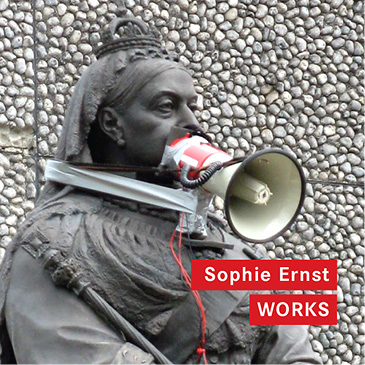The Silent Empress, What should she have said in Mix & Stir
Mix & Stir presents contemporary art from global perspectives in the inventive format of a cookbook. Encouraging an exploration of art beyond national and cultural hierarchies—much like culinary discovery—it features innovative, queer, idiosyncratic, and provocative practices, theories, and methods. Organized into thematic fields (Spectatorship, Collectives, Circulations, Exhibitions, Artists at Work, Postcolonial Perspectives, and Deep Art History), researchers, curators, and artists offer diverse contributions that invite readers to sample, savor, and explore art’s global dimensions.
Contributions by among others Thomas DaCosta Kaufmann, Sophie Ernst, Stijn Huijts, Joo Yun Lee, Nancy Jouwe, Meta Knol, Frans-Willem Korsten, Christa-Maria Lerm Hayes, Virginia MacKenny, Sarat Maharaj, Stéphanie Noach, Anja Novak, John Onians, Rob Perrée, Georges Petitjean, Rosalien van der Poel, Helen Westgeest

Mix & Stir
New Outlooks on Contemporary Art from Global Perspectives
ISBN: 978-94-93246-05-8
Publisher: Valiz with support of Mondriaan Fonds; Academy of Creative and Performing Arts, University of the Arts, The Hague / Faculty of Humanities, Leiden University
paperback, 23 × 16,7 cm (h × w) | 432 pp. | English | October 2021 |
The Magic of Projection: Augmentation and Immersion in Media Art
In her doctoral thesis, The Magic of Projection, Ernst contributes an artist’s perspective to media art theory by examining projection as a sculptural medium. She distinguishes immersive projection—requiring a willing suspension of disbelief—from augmentative projection, which “makes strange” by introducing critical distance. Rather than proving materially “real,” augmentative projection prompts viewers to imagine what could be real, thereby reshaping both physical and conceptual space.

The Magic of Projection: Augmentation and Immersion in Media Art
ISBN: 978-90-826264-0-7
Publisher: Leiden University
(Leiden, NL), 2016
Language: English
download pdf
Sophie Ernst: Works
Sophie Ernst: Works is a catalogue raisonné providing a comprehensive overview of Ernst’s projection-based artworks created between 2000 and 2016. The publication highlights key projects and themes, offering insight into Ernst’s distinctive exploration of memory, space, identity, and illusion through projection.

Sophie Ernst: Works
(Oxford, UK), 2016
Language: English
download pdf
HOME: Architecture of Memory
In 2012, Yorkshire Sculpture Park presented Sophie Ernst’s first UK solo exhibition, HOME, an ongoing project exploring memory, displacement, and belonging. Through interviews with individuals displaced by political events, such as the 1947 Partition of South Asia, Ernst projected video narratives onto architectural models. Hands trace remembered spaces, transforming static structures into intimately inhabited environments.
Exhibition catalogue (17.03. – 01.07. 2012, Yorkshire Sculpture Park). Essays by Helen Pheby, Iftikhar Dadi, Taha Mehmood and Sophie Ernst. With glossary and index. Photos: Felix Krebs.

HOME: Architecture of Memory
ISBN: 9781871480993
Publisher: Yorkshire Sculpture Park
(Wakefield, UK), 2012
Language: English
Lovedolls
In the exhibition Lovedolls, Sophie Ernst juxtaposed classical sculpture with contemporary media technology. The pristine white statues admired by 18th- and 19th-century classicism, once symbols of timeless beauty and moderation, now often appear pale, lifeless, or outdated. Ernst reanimates these familiar forms by using casts of ancient sculptures as projection screens for video works. Rather than serving as neutral backgrounds, the statues become active participants, revealing hidden meanings embedded within their classical forms. Through Ernst’s interventions, viewers encounter these sculptures anew, their perception sharpened by the interplay of moving images and static marble.
Exhibition catalogue, Museum für Abgüsse Klassischer Bildwerke, München; Abguss-Sammlung Antiker Plastik, Berlin.
Essays by Luca Giuliani and Quddus Mirza. Photos: Felix Krebs.

Lovedolls
ISBN: 3-9805981-3-6
Publisher: Museum für Abgüsse Klassischer Bildwerke
(München, D), 2004
Language: English and German
